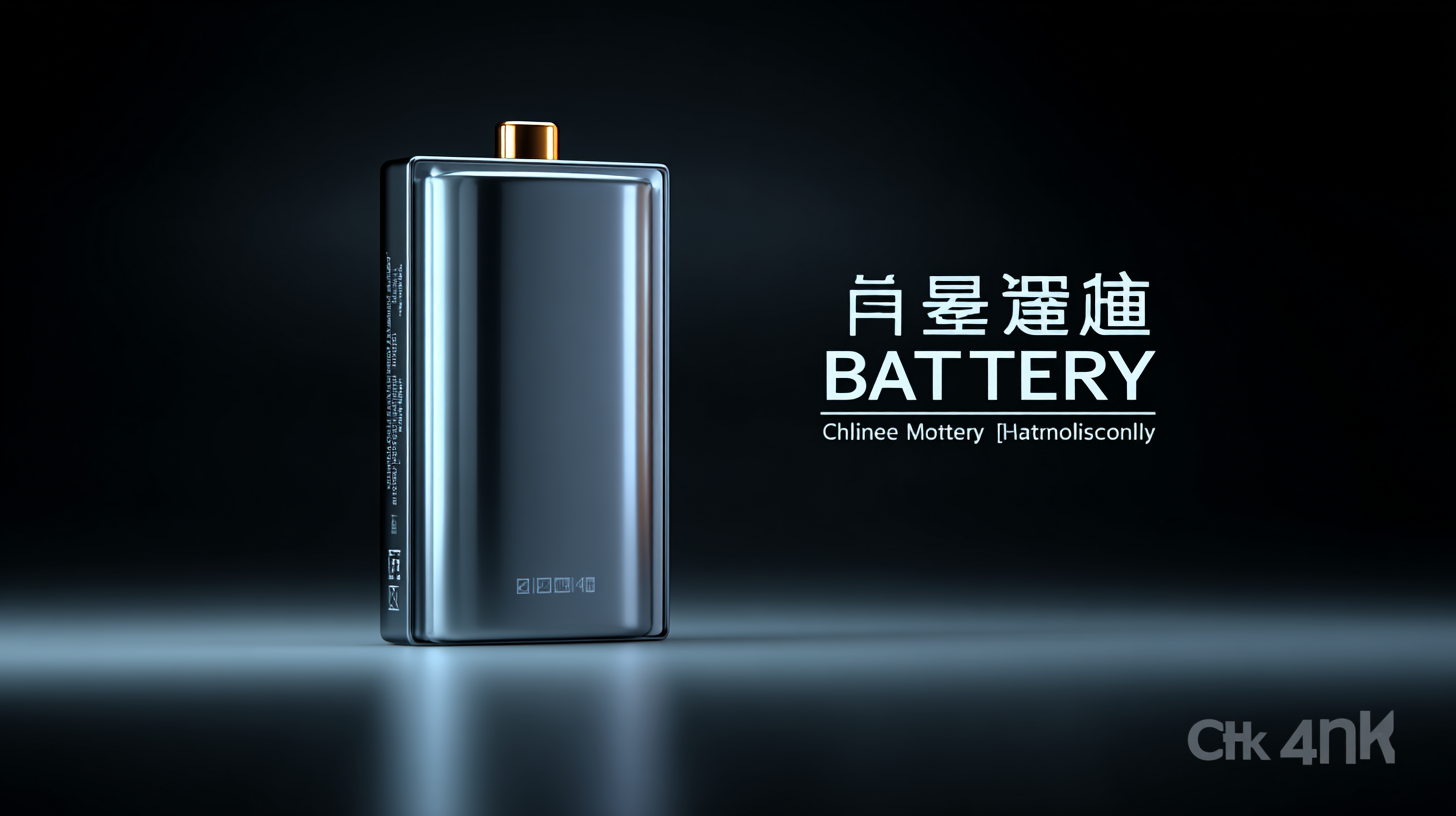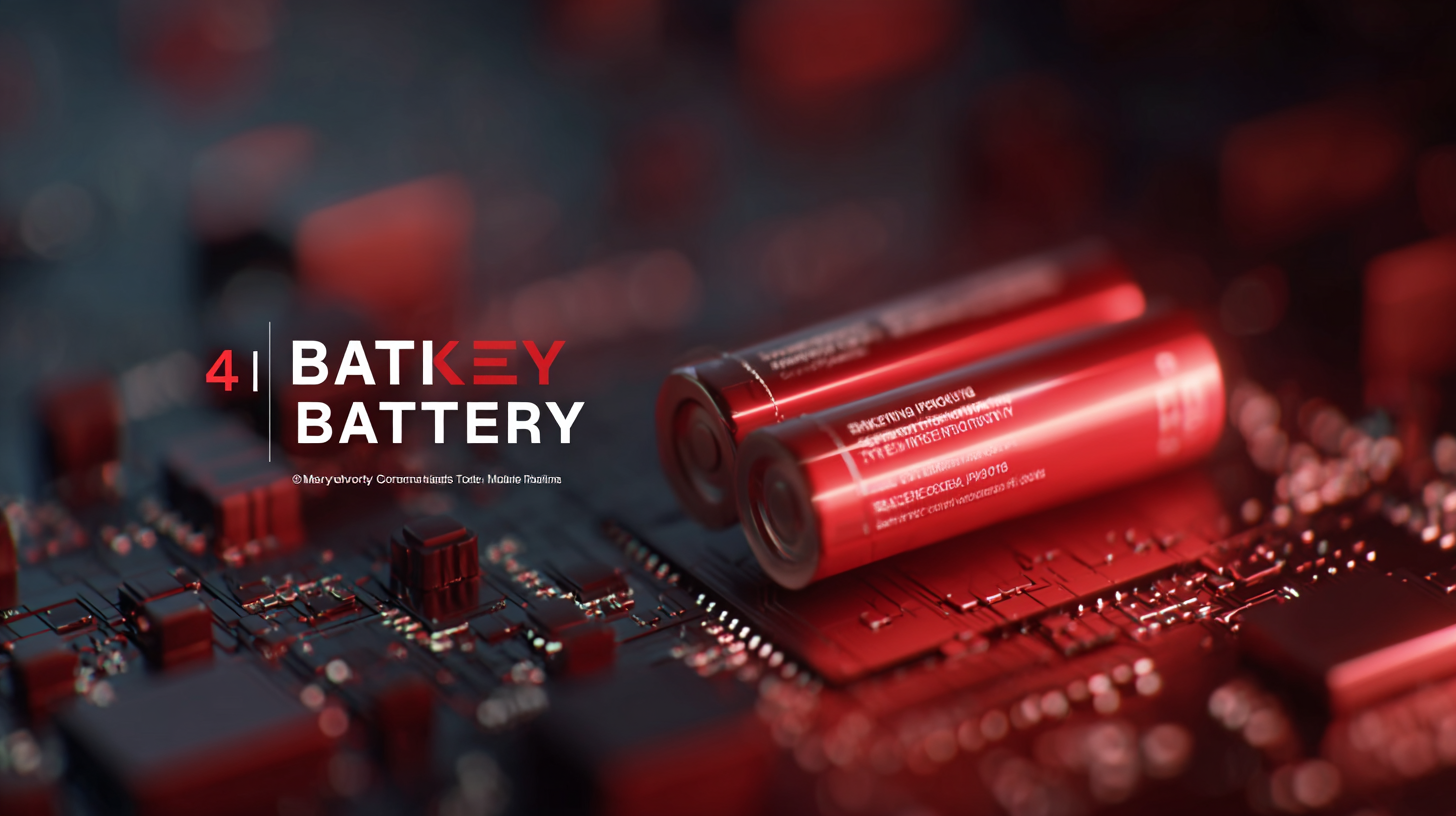Unleashing Chinese Innovation in Mobile Battery Technology for Global Market Success
As the global market for mobile batteries is expected to reach a staggering $120 billion by 2025, driven by the increasing demand for smartphones, electric vehicles, and portable electronic devices, the importance of sourcing high-quality suppliers cannot be overstated. Chinese innovation in mobile battery technology is at the forefront of this growth, with companies like CATL and BYD leading the charge in research and development. However, navigating the complex landscape of suppliers requires a strategic approach, as the right partnerships can significantly influence product performance and consumer satisfaction. To capitalize on this burgeoning opportunity, it is crucial to establish a comprehensive checklist that outlines key criteria for identifying and partnering with top-tier suppliers in the mobile battery industry. This ensures not only technological advancement but also global market success in an increasingly competitive environment.

Emerging Trends in Mobile Battery Technology: A Chinese Perspective
Emerging trends in mobile battery technology are increasingly being shaped by Chinese innovations, as the country emerges as a pivotal player in the global market. According to a report by the International Energy Agency (IEA), China's share of the global lithium-ion battery market reached 75% in 2022, positioning it as a leader in battery production. This dominance is driven by advancements in battery chemistry, particularly with lithium iron phosphate (LFP) batteries, which offer higher safety and longer lifespan compared to traditional lithium nickel cobalt manganese (NCM) batteries.
Moreover, ongoing research and development in solid-state battery technology shows promise for revolutionizing the mobile battery landscape. A report from BloombergNEF predicts that the solid-state battery market could grow from $50 million in 2022 to over $6 billion by 2030, with numerous Chinese companies actively investing in this space. These advancements not only aim to improve energy density and charging speeds but also focus on sustainability, reducing reliance on cobalt, and addressing environmental concerns associated with battery production. As these technologies mature, China's influence on the global mobile battery market is set to expand even further, pushing the envelope on both performance and sustainability.
Comparative Analysis of Lithium-Ion and Solid-State Batteries
The advancements in battery technology are pivotal as the mobile device market grows, particularly the competition between lithium-ion and solid-state batteries. Lithium-ion batteries currently dominate the market, accounting for approximately 90% of the energy storage solutions used in mobile devices. Their high energy density, cost-effectiveness, and relatively established manufacturing processes make them a trusted choice. For instance, data from BloombergNEF indicates that lithium-ion batteries are projected to see a cost reduction of 30% by 2030, enhancing their appeal further.
However, solid-state batteries present a promising alternative. These batteries utilize solid electrolytes, which can potentially offer higher energy densities and improved safety profiles over their lithium-ion counterparts. Research by IDTechEx predicts that the solid-state battery market will grow exponentially, surpassing $25 billion by 2030. This growth is driven by their ability to provide up to 70% more energy in the same volume compared to lithium-ion batteries, a crucial factor for the future of mobile technology. Chinese manufacturers, recognizing these trends, are investing heavily in R&D for solid-state technology to gain a competitive edge in the global market.
Comparison of Lithium-Ion and Solid-State Battery Technologies
Exploring the Applications of Graphene Batteries in Mobile Devices
The recent advancements in mobile battery technology, particularly the integration of graphene batteries, are reshaping the landscape of energy storage in mobile devices. A report from IDTechEx indicates that the graphene battery market is projected to reach $48 billion by 2030, fueled by its superior conductivity and energy density compared to traditional lithium-ion batteries. Graphene batteries can potentially double the lifespan of mobile devices due to their fast charging capabilities and lower degradation rates, addressing the pressing demand for longer-lasting power in smartphones and tablets.
Further emphasizing the benefits, a study published by the Journal of Power Sources highlights that graphene batteries can achieve a charge time significantly faster than their lithium counterparts—achieving up to 10 times quicker charging. This technology not only enhances user convenience but also aligns perfectly with the increasing consumer expectation for rapid recharging solutions in a fast-paced digital world. As manufacturers begin to adopt these innovations, we can anticipate a transformation in how we perceive mobile device functionality and power management, positioning Chinese companies at the forefront of global battery technology leadership.
| Material | Energy Density (Wh/kg) | Charge Time (minutes) | Cycle Life (charges) | Operating Temperature (°C) |
|---|---|---|---|---|
| Graphene Battery | 450 | 20 | 3000 | -20 to 60 |
| Lithium-ion Battery | 250 | 60 | 1500 | 0 to 45 |
| Solid State Battery | 500 | 30 | 3000 | -40 to 60 |
| Li-S Battery | 350 | 45 | 2000 | -10 to 60 |
Evaluating Environmental Impacts of Different Battery Technologies
The rapid advancement in mobile battery technology has elevated the conversation regarding its environmental impacts, particularly concerning materials such as nickel, cobalt, and manganese. These elements significantly contribute to particulate pollution, leading to a startling rate of human health damage. In light of these concerns, it is crucial to adopt comprehensive environmental life cycle assessments (E-LCA) to evaluate the sustainability of battery technologies. Innovative practices like the use of recycled materials, alongside robust assessment models, can enhance overall eco-efficiency.
Tips: When evaluating battery technologies, consider both their manufacturing and disposal phases. Implementing circular business models, such as battery leasing, can mitigate some environmental burdens by promoting the reuse and recycling of battery components. Additionally, exploring varied recycling methods can lead to improved recovery rates of valuable materials, enabling a more sustainable battery lifecycle.
While assessing the environmental impact of battery-powered vehicles, it’s essential to include a variety of battery chemistries and their specific life cycle implications. Research indicates that tailored approaches for recycling retired lithium-ion batteries can play a significant role in reducing waste and enhancing material recovery. This holistic view will foster greater accountability in the electric vehicle market, encouraging innovation that aligns with sustainability goals.

Future Innovations in Battery Management Systems for Enhanced Efficiency
The future of battery management systems (BMS) is poised for transformative innovations that will significantly enhance efficiency in mobile battery technology. As the demand for high-performance batteries escalates, particularly in the realm of electric vehicles (EVs) and consumer electronics, the global BMS market is projected to reach $10.5 billion by 2025, growing at a compound annual growth rate (CAGR) of 18.2% between 2020 and 2025, according to a report by MarketsandMarkets. This trend underscores the critical role of advanced BMS in maximizing battery performance, extending lifespan, and ensuring safety.
Chinese companies are at the forefront of this revolution, leveraging cutting-edge technologies such as artificial intelligence (AI) and machine learning to create smarter BMS solutions. These innovations focus on real-time monitoring and predictive maintenance, which can improve overall efficiency by up to 25% compared to traditional systems. Furthermore, optimizing thermal management through innovative cooling techniques allows batteries to operate under optimal conditions, thereby enhancing both safety and performance. As these advancements reshape the landscape, it is clear that the convergence of innovation in BMS and mobile battery technology will define the next era of energy solutions in the global market.

